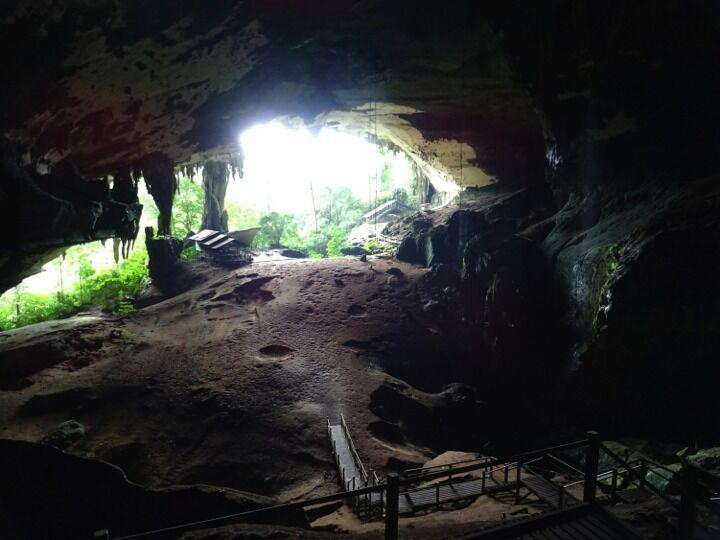Borneo's 37,000-year-old Deep Skull not related to Indigenous Australians
'Game-changing' analysis of 37,000-year-old skull questions ideas on prehistoric settlement of Pacific island.

New analysis of the oldest modern human skull discovered on Borneo in South-East Asia challenges the long-held view that the first modern inhabitants of the island were related to Indigenous, or Aboriginal, Australians. The scientists say closer observations of the 37,000-year-old 'Deep Skull' could yield new clues about the prehistoric settlement of the region.
The cranium specimen was first discovered in 1958 in Niah Cave, in the Malaysian part of Borneo. Subsequent analysis revealed it to have belonged to an adolescent male with ancestry in Australia.
However, the latest research published in Frontiers in Ecology and Evolution takes another in-depth look at the skull and draws very different conclusions.
Not a woman, nor an Australian
The first researcher to analyse the skull was leading British anthropologist Don Brothwell, in 1960. Brothwell thought the skull was very similar to that of Indigenous Australian people.
Yet, the study's authors, from the University of New South Wales, established that the ancient remains in fact shared a lot of common features with the current Indigenous people of Borneo.
Describing the skull's morphological characteristics, they have said it has similar delicately built features and is small in size, unlike the skulls of indigenous people from Australia. Brothwell also linked the skull to that of an adolescent boy, but the researchers say he may have been wrong about the sex and the age of the individual.

"Our study challenges many of the old ideas. It shows the Deep Skull is from a middle-aged female rather than a teenage boy, and has few similarities to Indigenous Australians. Instead, it more closely resembles people today from more northerly parts of South-East Asia," says lead author Associate Professor Curnoe.
Challenging prehistorical knowledge
This discovery is not just crucial because it overturns decades of knowledge regarding the Deep Skull. It also deeply challenges the understanding of the prehistoric settlement of the region. "Our discovery that the remains might well be the ancestors of Indigenous Bornean people is a game-changer for the prehistory of South-East Asia," Curnoe says.
To explain how South-East Asia was settled, scientists often talk about a 'two-layer' hypothesis. The idea is that the region was initially settled by people related to Indigenous Australians and New Guineans, who were then replaced by farmers from southern China a few thousand years ago.
Here, the scientists say this hypothesis is unlikely to apply to the earliest inhabitants of Borneo, in line with the picture emerging from genetic studies of the contemporary people from the region.
By showing that the earliest people to inhabit the island were much more similar to the Indigenous people living there today than to Indigenous Australians, they suggest there has been a long continuity between the first inhabitants of the region and their descendants through time.
"Our work, coupled with recent genetic studies of people across South-East Asia, presents a serious challenge to the two-layer scenario for Borneo and islands further to the north," concludes Curnoe. "We need to rethink our ideas about the region's prehistory, which was far more complicated than we've appreciated until now."
© Copyright IBTimes 2025. All rights reserved.






















